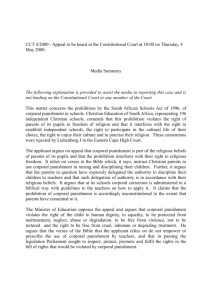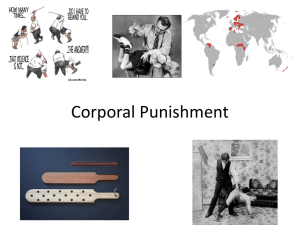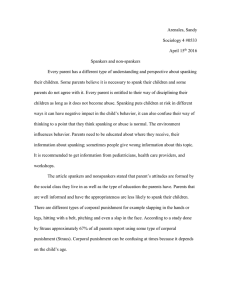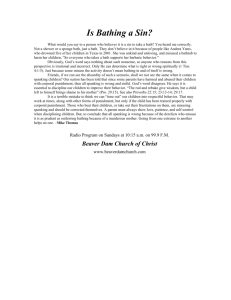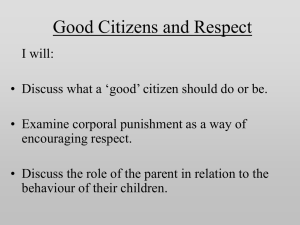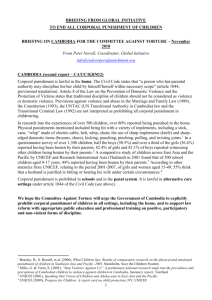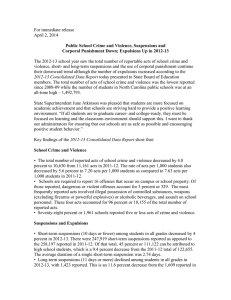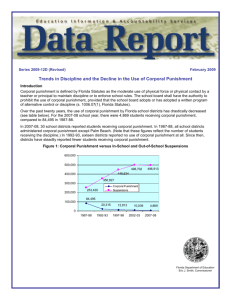Corporal Punishment Policy
advertisement
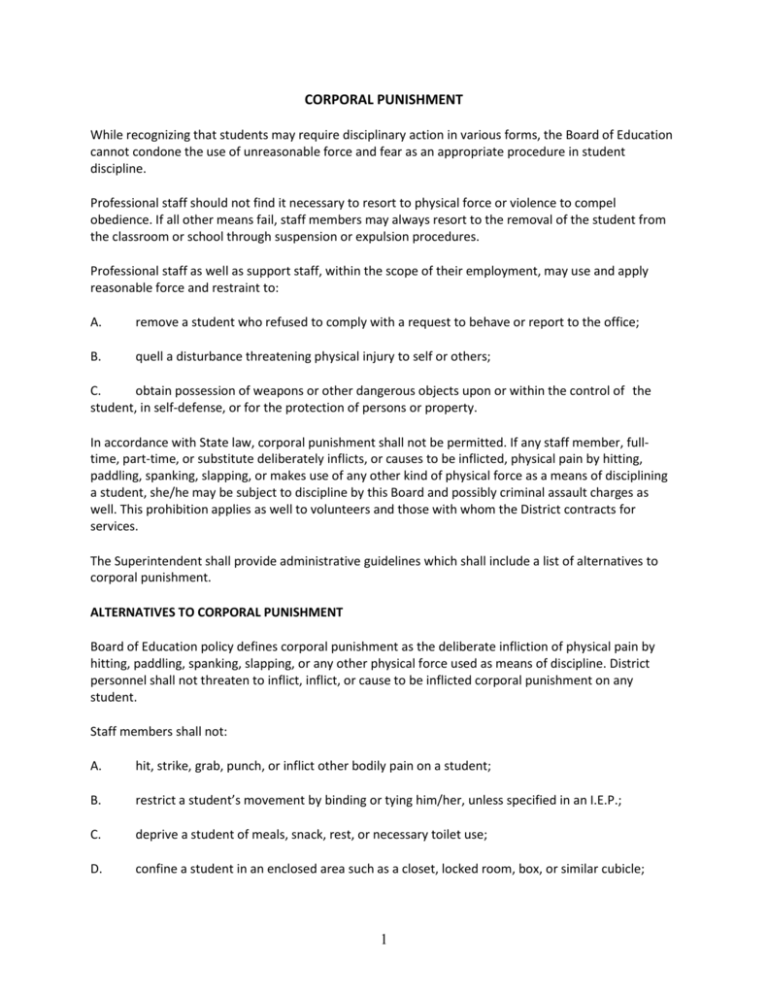
CORPORAL PUNISHMENT While recognizing that students may require disciplinary action in various forms, the Board of Education cannot condone the use of unreasonable force and fear as an appropriate procedure in student discipline. Professional staff should not find it necessary to resort to physical force or violence to compel obedience. If all other means fail, staff members may always resort to the removal of the student from the classroom or school through suspension or expulsion procedures. Professional staff as well as support staff, within the scope of their employment, may use and apply reasonable force and restraint to: A. remove a student who refused to comply with a request to behave or report to the office; B. quell a disturbance threatening physical injury to self or others; C. obtain possession of weapons or other dangerous objects upon or within the control of the student, in self-defense, or for the protection of persons or property. In accordance with State law, corporal punishment shall not be permitted. If any staff member, fulltime, part-time, or substitute deliberately inflicts, or causes to be inflicted, physical pain by hitting, paddling, spanking, slapping, or makes use of any other kind of physical force as a means of disciplining a student, she/he may be subject to discipline by this Board and possibly criminal assault charges as well. This prohibition applies as well to volunteers and those with whom the District contracts for services. The Superintendent shall provide administrative guidelines which shall include a list of alternatives to corporal punishment. ALTERNATIVES TO CORPORAL PUNISHMENT Board of Education policy defines corporal punishment as the deliberate infliction of physical pain by hitting, paddling, spanking, slapping, or any other physical force used as means of discipline. District personnel shall not threaten to inflict, inflict, or cause to be inflicted corporal punishment on any student. Staff members shall not: A. hit, strike, grab, punch, or inflict other bodily pain on a student; B. restrict a student’s movement by binding or tying him/her, unless specified in an I.E.P.; C. deprive a student of meals, snack, rest, or necessary toilet use; D. confine a student in an enclosed area such as a closet, locked room, box, or similar cubicle; 1 E. cause any of the above to occur. Staff may, however, provide for a "time-out" area as a disciplinary procedure. The following alternatives to the use of corporal punishment are recommended. As formerly with corporal punishment, these alternatives should also be viewed as last resort options when wellexecuted school and classroom management practices have not been effective. The teacher has the authority to: A. deny participation in special school and/or non-curricular-related activities; B. confer with parents on sanctions which will be established both at school and at home or contractual agreements whereby the student commits to self-controlling behavior; C. refer the student to a social worker, psychologist, and/or clinical specialists; D. coordinate District services with social-service agencies such as Public Health, Social Services, Mental Health, etc., and/or with private institutions or agencies offering related appropriate services, providing there is no cost to the District. It is essential that any of the above alternatives that involve disciplinary actions be conducted in accordance with due process. USE OF PHYSICAL FORCE District personnel may, however, use reasonable physical force upon a student necessary to maintain a safe learning environment. They may also use reasonable physical force upon a student necessary to protect: A. a staff member’s personal safety; B. the safety of another staff member or visitor; C. the safety of the student or other students; D. school property from damage or destruction; E. themselves and others from danger arising from a dangerous weapon or object which is in the possession of or control of a student. 2


